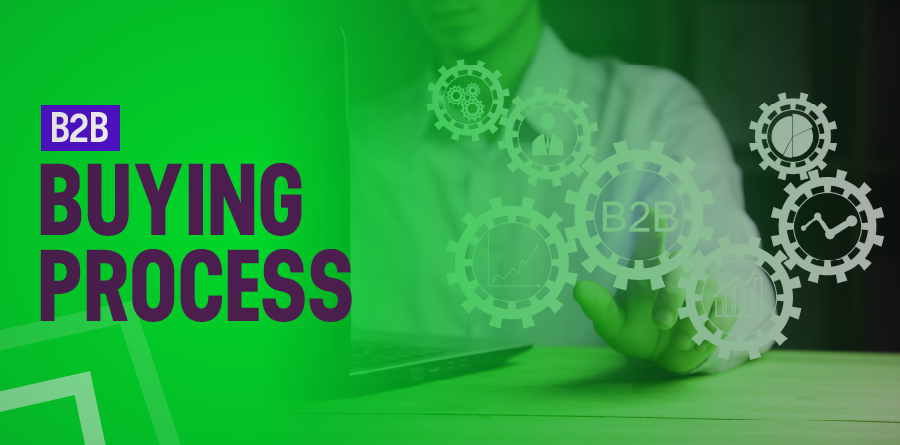Understanding the Emotional Factors Behind B2B Buying Decisions
How can businesses get people to buy from them instead of their competitors?
Since we know that emotions drive most of our decisions, trying to appeal only to logic won’t always work.
Yes, clear thinking is important sometimes, but it’s only a small part of the picture.
Because people mostly follow their feelings, marketers need to make sure their brand is top of mind before consumers start making decisions to buy.
This is where Category Entry Points (CEPs) come in.
What are CEPs?
Let’s say you sell chips or offer business finance services. Your goal is to make sure people remember your brand when they are ready to buy. The stronger the memory connections, the more likely they are to pick your brand.
You don’t always need to be different. Many companies think they need to stand out, but research shows that successful brands usually attract a broad audience, not just a niche group.
That doesn’t mean uniqueness isn’t important, but instead of focusing on what makes your brand special, you should target key moments when people are thinking about buying. These moments help create strong memory links with your brand.
Finding Your CEPs
Finding the right places to promote your brand isn’t easy, but there are simple ways to think about it without spending money on research.
The 7 Ws can help:
- When: When do people think about your product? (Seasonal?)
- Where: Where do people typically use your product? (Where do your customers work?)
- While: What happens before, after, or during people’s use of your product? (What do they do afterward?)
- What: What other products do people use with yours? (How do they go together?)
- Why: Why do people buy your product? (What motivates them?)
- How: How do people feel when using your product? (How did they feel before using it?)
- Whom: Who uses your product? (Who benefits from it?)
Think about what makes your business special and how it helps your customers. Then, ask these questions:
- Who are your customers?
- What do they need?
- When do they need it?
- Where do they look for it?
- Why do they choose your business?
- How do they use your product or service?
Write down at least 10 answers, then narrow them down to 5-7 that matter most to your business. These answers will guide your marketing strategy.
The more you highlight these details in your ads and materials, the more likely people are to remember your business and consider you when they need what you offer.
CEPs in Action
Imagine you run a business that helps companies with finance.
You might offer services like:
- Helping businesses grow in the U.S.
- Saving money on finance
- Providing the right financial mix
- Assisting with company acquisitions
- Helping businesses develop new products
- Passing down a family business
For example, if a company wants to expand in the U.S. and needs funding, here’s what I’d do:
- Organize a large event for international banks in the area and invite a well-known speaker.
- Share an inspiring story about a small business from Alberta that opened a branch in Texas.
- Make it easy for businesses to find loans or investment options for U.S. growth on my website.
- Publish articles on my expertise and share them on my website and social media.
- Use the right keywords for Google Search to ensure my business appears first.
- Reach out to podcast hosts in the finance industry.
Remember, keep your focus on one main idea at a time. People can’t process too many ideas at once, so less is more in marketing.
Marketing Is an Investment
Even with a large advertising budget, results don’t happen overnight. Building strong brand connections takes time. By consistently working at it, businesses can boost profits, become less sensitive to price changes, and grow their market share.
While the sales team focuses on getting customers now, your role as a marketer is to ensure the business thrives long-term.
Professor John Dawes explains this well in his “95–5 Rule.” He says advertising helps build and refresh memories of your brand, which becomes important when customers are ready to buy. The stronger your brand’s memory in customers’ minds, the more likely they are to choose it.
You Are Not The Customer
Next time you catch your marketing team using their own experiences to predict customer behavior, stop them.
Marketers aim to create a brand they love and use, but it’s important to remember that marketers are not the same as customers.
It’s like when you first sit in the driver’s seat of a car. You can control where it goes, but it’s different from being a passenger. Marketers often start by working with smaller brands and, over time, may lead major brands like Pepsi or McDonald’s. But even with these big brands, we need to avoid assuming that customers think like us.
Marketers Are Different
In marketing, we stand out. We’re often seen as outgoing and culturally aware, constantly surrounded by brands. We notice every ad, commercial, or billboard and engage with brands on social media. To us, brands are a huge part of life, but most everyday consumers don’t think about them in the same way.
We Are Not The Customer
This realization is crucial for success in marketing. When you become a marketer, you begin to see things from a different perspective, no longer thinking as a consumer.
Mark Ritson’s famous quote, “You can’t read the label when you’re inside the bottle,” highlights that marketers often don’t fully understand their customers at first. This gap is filled with research, and it’s a reality check—marketers don’t always know who buys their products, and they need to accept that.
This experience, known as “market orientation” or being “customer-focused,” is the foundation for meaningful work as a marketer. It encourages you to question your instincts and rely on research to verify your beliefs.
Consumer-Centric Approach
When I worked at PepsiCo, we would conduct one-on-one interviews with random people across Canada. These conversations were eye-opening, revealing that:
- People don’t see brands as direct competitors, but rather as alternative choices.
- They may not know that the same company owns several brands they use.
- They often buy your product only once or twice a year.
Consumers don’t always buy logically. For example, when thirsty, they might not decide between Coke and Pepsi right away. Similarly, when shopping for chips, they don’t notice how much effort marketers put into arranging products; they simply grab their favorite brand.
Buying habits vary. Some people buy a product just once a year, while a few might buy it multiple times. As Professor Byron Sharp found, a large portion of sales comes from a small group of customers.
Most people are bombarded with hundreds of ads daily, but only a few catch their attention. If we paid attention to every ad, it would take up several hours each day. Human attention is selective, and people process information based on their routines.
Market Orientation
The truth is, most people don’t think much about your brand. As marketers, we compete for brief moments of attention. We rarely succeed in capturing it, but that’s okay.
Instead of trying to be remembered by everyone, our goal should be to stay top of mind for people when they’re ready to make a purchase.
If we only listen to salespeople, we may miss the mark. Consumers don’t think like us, and it’s essential to stop marketers from using their personal experiences to predict customer behavior.
Conclusion
Marketing is a long-term investment that requires patience and consistent effort to build strong brand memories in customers’ minds. While the sales team focuses on immediate results, marketers ensure the business’s future growth by creating lasting brand connections. Marketers must remember that they are not the customers, as their experiences and perspectives are often different from those of the people they are trying to reach. By focusing on customer needs and behaviors, and conducting thorough research, marketers can create successful, consumer-focused strategies that make the brand memorable when it matters most.














Comments (11)
Thanks for sharing. I read many of your blog posts, cool, your blog is very good.
Thanks a lot! Glad you enjoy the content.
hentairead very informative articles or reviews at this time.
Thanks Alot.
I don’t think the title of your article matches the content lol. Just kidding, mainly because I had some doubts after reading the article.
Puraburn I very delighted to find this internet site on bing, just what I was searching for as well saved to fav
I’m happy you found it useful! Enjoy exploring more content. 😊
Your article helped me a lot, is there any more related content? Thanks!
Thanks for the feedback! Yes, I’ve got more related content—just let me know what you’re looking for!
Can you be more specific about the content of your article? After reading it, I still have some doubts. Hope you can help me.
Of course! I’d be happy to clarify the article for you.